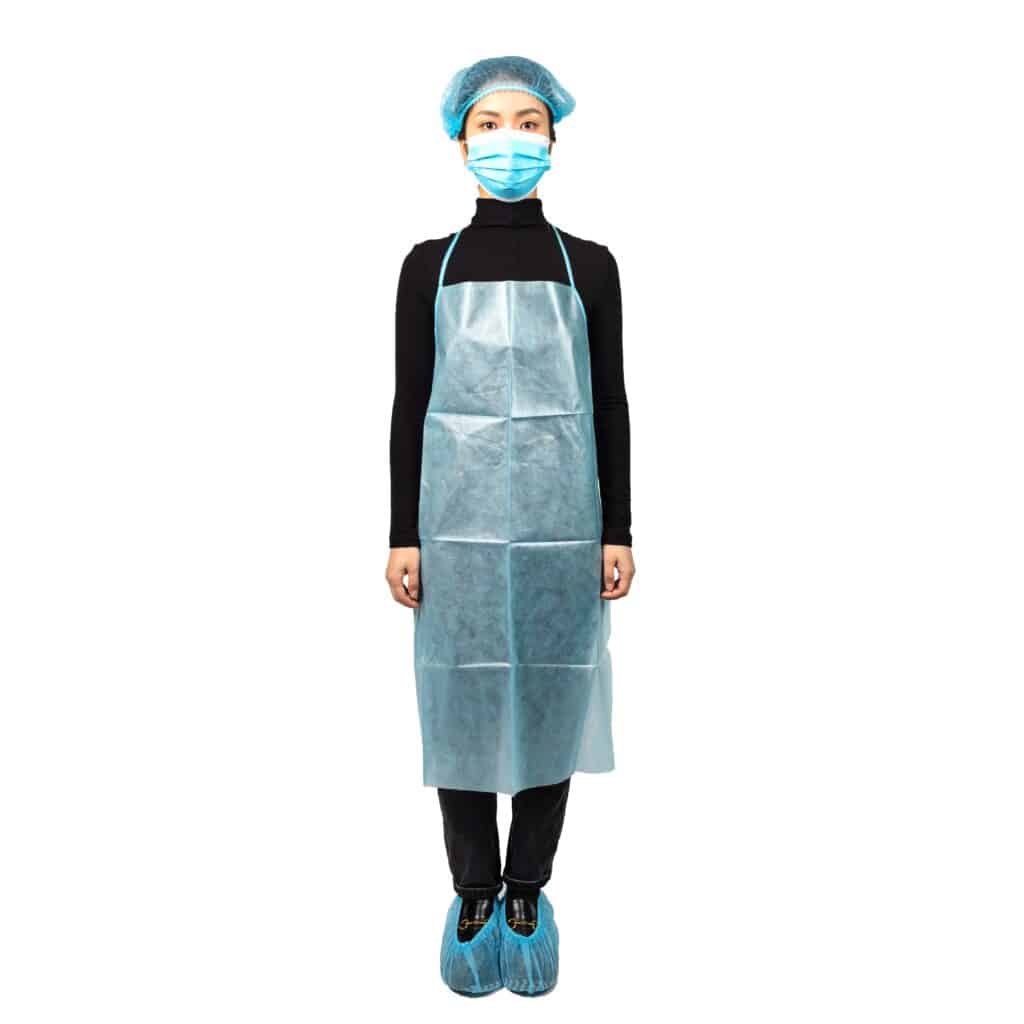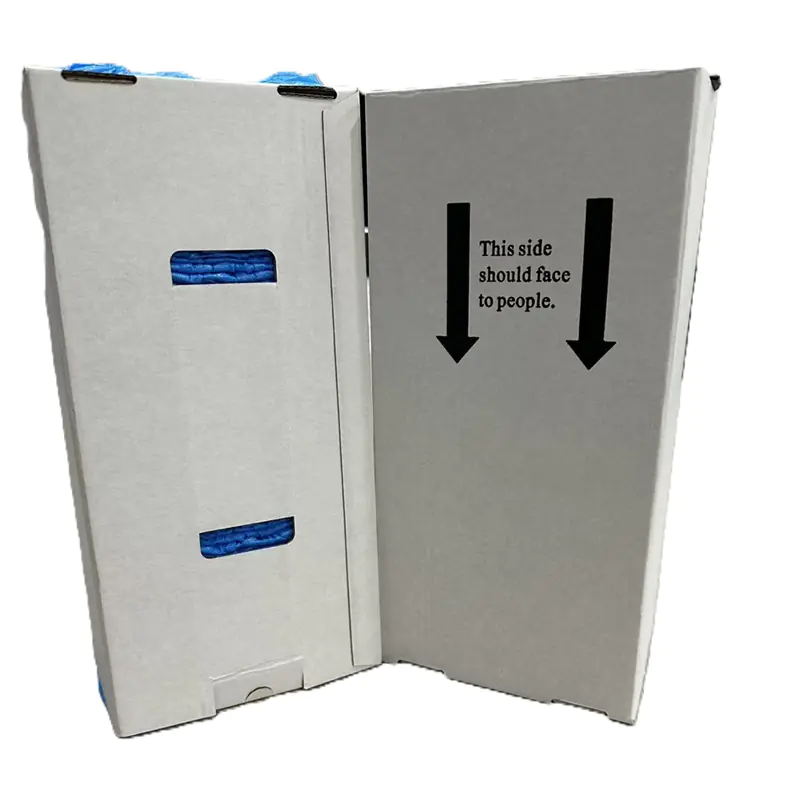Introducción
As you walk the halls of a hospital, one of the most common sights is healthcare professionals donned in disposable aprons. These aren’t just for show; they play an integral role in infection control and personal protection. Let’s delve into the nitty-gritty of disposable aprons used in hospitals.

Importancia de los delantales desechables en la sanidad
In a world where safety and hygiene are paramount, disposable aprons provide a barrier between healthcare workers and potential contaminants. Think about it: Wouldn’t it be reassuring to know that the layer protecting you from potential splashes or spills is fresh and uncompromised every time?
Materials Used in Disposable Aprons
Polyethylene (PE) Aprons
Features & Benefits
PE aprons are lightweight and waterproof. Their smooth surface ensures that liquids roll off, making them ideal for tasks where liquid exposure is a concern.

Chlorinated Polyethylene (CPE) Aprons
Features & Benefits
CPE aprons boast added strength and durability compared to PE aprons. They are often used in more demanding environments due to their resistant nature.

Polypropylene (PP) Aprons
Features & Benefits
PP aprons are breathable, making them comfortable for longer wear times. However, they’re not as liquid-resistant as PE or CPE, making them suitable for tasks with minimal liquid exposure.

Polypropylene + Polyethylene (PP+PE) Aprons
Features & Benefits
Combining the breathability of PP and the waterproof nature of PE, these aprons offer a balance of comfort and protection. They’re often seen in scenarios where there’s potential for both liquid splashes and a need for extended wear.

Microporous Aprons
Features & Benefits
Microporous aprons offer a barrier against both liquid and airborne particles. They’re ideal for settings where there’s a risk of exposure to tiny contaminants, such as in microbiology labs.

Choosing the Right Disposable Apron for the Job
Understanding the materials is only half the battle. The key is matching the right apron to the job at hand. While PE might be great for a quick procedure with potential fluid splashes, a microporous apron would be more apt in a lab setting.

Conclusión
Disposable aprons, while seemingly simple, are pivotal in the healthcare setting. The material of the apron, be it PE, CPE, PP, PP+PE, or microporous, determines its usage and efficacy. As healthcare continues to evolve, the need for these protective barriers remains unwavering.

Preguntas frecuentes
- Why are disposable aprons preferred over reusable ones in hospitals?
- For infection control. Each use of a disposable apron is with a fresh, uncontaminated piece, reducing cross-contamination risks.
- How are microporous aprons different from other materials?
- They provide protection from both liquid and airborne particles, making them unique in their protective capabilities.
- Can PP aprons be used during surgeries?
- Typically, no. Since they aren’t fully liquid-resistant, they’re not ideal for surgical settings with potential fluid exposure.
- How are PE and CPE aprons different?
- CPE aprons are generally more durable and resistant due to the chlorination process they undergo.
- Are all disposable aprons recyclable?
- It depends on the material and local recycling capabilities. It’s always best to check with local regulations and recycling centers.











